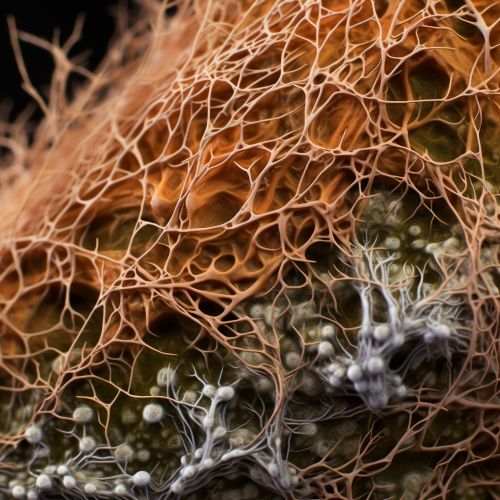Endophytism
Overview
Endophytism refers to the symbiotic relationship between certain types of fungi or bacteria and plants, where the microorganisms live inside the plant tissues without causing apparent harm. This phenomenon is widespread in nature, with almost all plant species known to harbor endophytes. The interaction between the host plant and the endophyte can be mutualistic, where both organisms benefit, or neutral, where the endophyte benefits without harming or benefiting the host.


Endophyte Biology
Endophytes are typically fungi or bacteria that live within plant tissues, including stems, leaves, and roots. They can be found in virtually all plant species studied to date, indicating a significant ecological role. Endophytes can be classified as clavicipitaceous endophytes, which are mostly associated with grasses, and non-clavicipitaceous endophytes, which are found in a wide range of plant species.
Host-Endophyte Interactions
The relationship between endophytes and their host plants can vary from mutualistic to neutral. In a mutualistic relationship, both the endophyte and the host plant benefit. For example, the endophyte may provide the host plant with nutrients or protection against pathogens, while the host plant provides the endophyte with a protected environment and access to nutrients. In a neutral relationship, the endophyte benefits from living within the plant tissues without providing any apparent benefits or harm to the host.
Role in Plant Health and Productivity
Endophytes can play a crucial role in plant health and productivity. They can enhance plant growth by producing plant growth-promoting substances, improving nutrient uptake, or protecting the plant against pathogens. Some endophytes can also enhance plant tolerance to environmental stresses, such as drought, salinity, or heavy metals, which can be particularly beneficial in harsh or changing environments.
Ecological and Agricultural Significance
The ecological and agricultural significance of endophytes is increasingly recognized. They can contribute to plant diversity and ecosystem functioning, and they can be used in sustainable agriculture to enhance crop productivity and resilience. The potential applications of endophytes in agriculture include biocontrol agents against plant pests and diseases, plant growth promoters, and stress tolerance enhancers.
Challenges and Future Directions
Despite the growing interest in endophytes, many challenges remain in understanding their biology, ecology, and applications. These challenges include the difficulty in isolating and culturing endophytes, the complexity of host-endophyte interactions, and the need for more research on the potential risks and benefits of using endophytes in agriculture. Future research directions include the development of new methods for endophyte isolation and characterization, the study of endophyte-host interactions at the molecular level, and the exploration of novel endophyte applications in agriculture and other fields.
